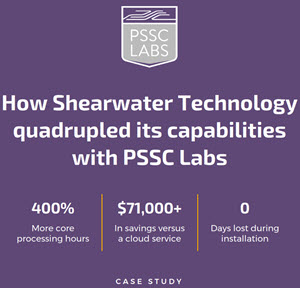 On June 6, Red Hat announced that the University of Alabama at Birmingham (UAB) is using Red Hat Ceph Storage to support the growing needs of its research community. UAB selected Red Hat Ceph Storage because it offers researchers a flexible platform that can accommodate the vast amounts of data necessary to support future innovation and discovery.
On June 6, Red Hat announced that the University of Alabama at Birmingham (UAB) is using Red Hat Ceph Storage to support the growing needs of its research community. UAB selected Red Hat Ceph Storage because it offers researchers a flexible platform that can accommodate the vast amounts of data necessary to support future innovation and discovery.
UAB is a leader in computational research, with more than $500 million in annual research expenditures in areas including engineering, statistical genetics, genomics and next-generation gene sequencing,” said Curtis A. Carver Jr., VP and CIO at UAB. “Researchers and students aggregate, analyze, and store massive amounts of data, which is used to support groundbreaking medical discoveries from new cancer biomarkers to state-of-the-art magnetic resonance imaging techniques.”
The ability to scale our storage, to unleash the full intellectual capital of our faculty, researchers, students and clinicians without regard to storage, is a dramatic step forward. We have truly changed the conversation about storage, enabling innovation that is not limited by capacity barriers.
To accelerate vital research, UAB has invested heavily in expanding its digital storage. UAB selected a software-defined storage solution, Red Hat Ceph Storage, because of its scalability and ability to support block, object, and file storage in one open source platform. Additionally, UAB researchers sought a solution based on industry-standard hardware to keep costs low, as well as one that is compatible with cloud computing models such as OpenStack. With their new software-defined storage environment, UAB researchers can store large data sets on server-class hardware to enable big data analytics without requiring hands-on storage management.
As requirements increase, capacity can be added gradually, cost-effectively and without disruption. Using a shared-cost model, researchers include the cost of industry-standard server hardware in their grant applications and, if the grant is accepted, UAB’s IT organization adds the server to the pool of storage and manages it. This enables researchers to allocate more time and resources to their research, rather than the costs and limitations of their storage solutions. In the three years since UAB implemented Red Hat Ceph Storage, they have reduced data storage costs by 54 percent.
Today, UAB operates a high-performance computing cluster that has increased processing power by 11 times and storage capacity by 10 times. The reliability and performance of Red Hat Ceph Storage has also complemented the high-performance computing user base within the university.
Every day, research institutions like UAB are fueling discoveries that change lives,” said Ranga Rangachari, vice president and general manager, Storage, Red Hat. “They need easy access to massive amounts of information, and the ability to scale-out as their storage needs increase. We are proud to offer an affordable storage solution that is not only based on industry-leading technology but is supported and certified by world-class engineers.”




